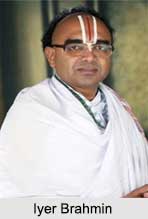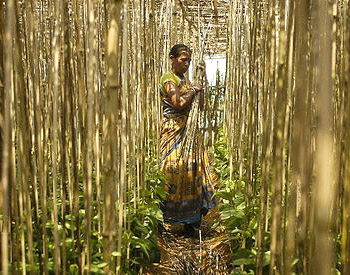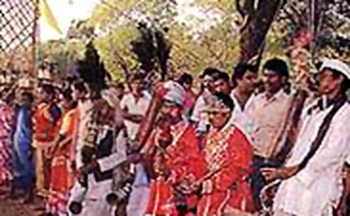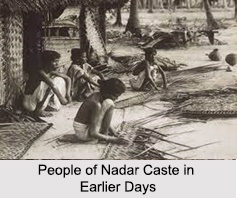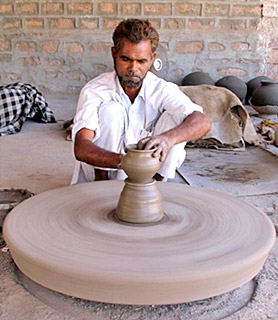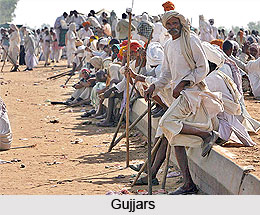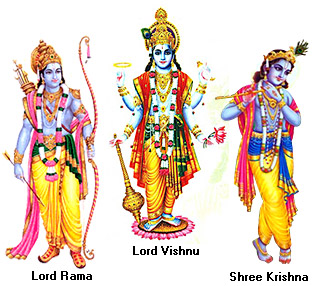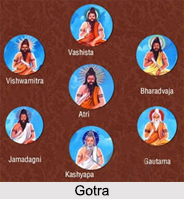 Shri Munisuvranath Digambar Jain Kshetra located at Keshavrai Patan in Rajasthan is a Jain pilgrimage centre. It is an Atishaya Kshetra i.e. Place of Miracle. It is dedicated to Lord Munisuvrata.
Shri Munisuvranath Digambar Jain Kshetra located at Keshavrai Patan in Rajasthan is a Jain pilgrimage centre. It is an Atishaya Kshetra i.e. Place of Miracle. It is dedicated to Lord Munisuvrata.
History of Shri Munisuvranath Digambar Jain Kshetra
According to history the temple of Shri Munisuvranath Digambar Jain Kshetra dates back to the ancient times. It is a huge temple dedicated to Lord Munisuvratnath, the 20th Jain Tirthankara. Earlier the place was known as Ashrampattan or Ashramnagar. Later in the year 1601 A.D. it was named as Keshavrai Patan. A Hindu shrine, Shri Keshavrai temple has been constructed here by the King of Bundi Maharav Shatrushal. The place was named according to the name of the temple. The place served as a popular pilgrimage spot in the ancient times and was regarded to be a sacred place. Yativar Madankeerti and Udaikeerti have also described about the holiness of this city.
Keshavrai Patan has been described as Nirvankand by Shri Kundakunda Acharyadeo. Shri Siddhant Chakrivarti Acharya Nemichandradeo is also credited with completing his two great texts Laghu Dravya Samgraha and Brihat Dravya Samgraha at this place.
The temple of Shri Munisuvranath Digambar Jain Kshetrais associated with many legends and miracles. According to one legend, once Muhammad Ghori, the ruler of the Ghurid dynasty during one of his invasions attacked on this temple. He tried to destroy the temple and the miraculous idol of Lord Munisuvranath. It is said that when the soldiers struck the thumb of a foot of the idol with chisel and hammer, a flood of milk began to flow. The flow was such that it forced the soldiers to run away from the place.
The marks of the attack on the foot of the image can still be seen. It is believed that the idol possess miraculous powers. Devotees from far off places visit the temple to offer their prayers. It is said that the Lord fulfills the desires of the devotees who pray with full devotion and love.
Temple of Shri Munisuvranath Digambar Jain Kshetra
The Temple of Shri Munisuvranath Digambar Jain Kshetra is very old and has been built magnificently with artistic designs. It houses the image of Lord Munisuvratnath. The temple has been constructed on a higher place near Chambal River in Keshavria Patan. The idol is almost 4.5 feet in height and is dark green in colour. It is installed in an underground basement.
This basement is supported by 16 beautiful pillars that stand as a unique piece of art and architecture. This idol is carved on a flat rock with three tiered umbrella over head and a halo in back. Other than this there are six magnificent idols of 13th century installed here. An idol of Lord Padmaprabha is installed on a flat rock. The temple is surrounded by scenic beauty on the bank of Chambal River. Many annual gatherings are organized by the temple authorities. The Janma, Tapa and Gyan Kalyanaka Divas i.e. the day of birth, accepting penance and the day of attaining supernatural knowledge known as Kevalgyan of Lord Munisuvratnath is celebrated on Vishakh Krishna. The day of salvation of the Lord is also celebrated on the Phalgun Krishna. The temple has provisions for dharamshalas or rest houses for the pilgrims these are well equipped with all modern facilities. Shri Munisuvratnath Digambar Jain Mandir Dharmshala is a famous rest house here.
Shri Munisuvranath Digambar Jain Kshetra is well connected to road, rail and air. Busses and taxies are available from Kota and Bundi. The nearest railway station is located at Keshavrai Patan and Kota Junction. Busses are available there. The nearest airport is located at Kota.










